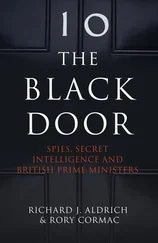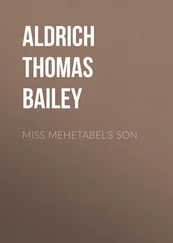Deliberate American pressure on the pound eventually forced Britain’s ignominious withdrawal from Suez, and contributed to Eden’s sudden resignation in January 1957. Eden’s foreign policy may have failed, but the intelligence support he received had been excellent. In the wake of Suez, Selwyn Lloyd wrote to Eric Jones, the Director of GCHQ, congratulating him on the torrents of Middle East intelligence that sigint had provided during the crisis, particularly after the seizure of the canal. ‘I have observed the volume of material which has been produced by G.C.H.Q. relating to all the countries in the Middle East area,’ he wrote, suggesting that the traffic of many countries was being read, and added: ‘I am writing to let you know how valuable we have found this material and how much I appreciate the hard work and skill involved in its production.’ Jones passed on these congratulations to units such as the Army’s 2 Wireless Regiment on Cyprus and the RAF’s 192 Squadron. 43 There had also been shipborne signals interception by the Royal Navy. The RAF airborne signals element was especially important during the invasion. The ageing RB-29 Washingtons had been despatched from Watton to map the characteristics of Egyptian anti-aircraft defence. This included the habit of shutting down air-defence radar routinely just after midday – a priceless piece of information. 44
At a higher level, GCHQ read much of Cairo’s diplomatic traffic with key embassies in the region during the mid-1950s, such as those in Amman and Damascus. 45 It also read traffic with Egypt’s London Embassy. 46 No less importantly, GCHQ stepped up its watch on the Soviets. On 15 November 1956, Britain’s leaders were reassured that there was ‘still no evidence from signals intelligence sources of any large-scale Soviet preparations to intervene by force in the Middle East’. 47 However, there had been problems. Some of the newly civilianised sigint sites had complained about working round the clock during the crisis, causing managers to wonder about the wisdom of non-military intercept operations. 48
Despite GCHQ’s operational success, the Suez Crisis left a problematic legacy. It led directly to the eviction of GCHQ from some of its more valuable real estate in the Middle East and the Indian Ocean. In December 1956 GCHQ was just opening a large and well-equipped secret sigint station covering the Indian Ocean at Perkar on Ceylon, which had been constructed at a cost of close to £2 million. The Ceylonese government had wanted to free up access to the old sigint site at HMS Anderson for redevelopment. The purpose of the GCHQ site at Perkar was hidden from the Ceylonese, requiring the British to generate a cover story. Much debate had taken place in London over whether to let the Ceylonese Prime Minister, Solomon Bandaranaike, in on the real function of the station. GCHQ decided against candour, fearing ‘leakage’. 49 British officials had always been convinced that ‘the real purpose could be easily disguised’. 50
Endless effort had gone into the Perkar site. By 1955 it had been upgraded to monitor signals traffic from ‘all bearings’, and boasted a vast aerial farm that covered more than four hundred acres. 51 Yet the Suez operation effectively destroyed this expensive new facility almost as soon as it was completed. The Ceylonese were incensed at Eden’s imperial escapade, and believed the British had refuelled ships in Ceylon en route to the invasion of Egypt. They now demanded a schedule for the removal of all foreign bases, without exception. The Treasury was aghast, stating that even a brief visit to Ceylon ‘brings home the complexity of these installations’ and ‘their vital importance’. Officials came up with the preposterous idea of using service personnel in civilian clothes in the hope of assuaging the Ceylonese. 52 Bandaranaike stamped his foot, insisting that all the British, however attired, had to go. A compromise was agreed: ‘The GCHQ station can be given up entirely, but we should like to keep it in operation for five years.’ Ultimately, Britain had lost the best site in the Indian Ocean. 53
GCHQ felt the reverberations of Suez elsewhere. In Iraq, Britain enjoyed a good relationship with the ruler King Faisal. As a result, the British had been allowed to retain a number of bases. One of these was RAF Habbaniya, not far from Baghdad. Superficially this looked like so many military aerodromes in the Middle East, but in fact it housed 123 Signals Squadron, later 276 Signals Squadron, which ran a large sigint monitoring station. Airborne sigint flights from Habbaniya crossed into Iran, and then loitered over the Caspian Sea. However, as a result of Suez, Faisal’s political situation deteriorated rapidly, with uprisings in the cities of Najaf and Hayy. Iraq’s membership of the Baghdad Pact, a British-managed military alliance, only exacerbated popular hatred of the regime. Then, in the summer of 1958, Faisal’s ally, King Hussein of Jordan, asked for military assistance during a growing crisis in the Lebanon. The Iraqi Army put together an expeditionary force, but in the early hours of 14 July 1958 the assembled column turned against its own supreme commander, marched right into Baghdad and carried out a coup. Revolutionary officers arrived at the Royal Palace at 8 o’clock in the morning and ordered the King, his immediate family and his personal servants into the courtyard. They were politely asked to turn away from their captors, whereupon they were machine-gunned. Most died instantly, but Faisal survived a few hours. Fortunately, GCHQ intercepts of Egyptian diplomatic traffic gave precise information about Nasser’s parallel plots against the King of neighbouring Jordan a few days later, prompting timely British support for the beleaguered monarch. 54
However, Britain’s time in Iraq was now up, and the final departure from RAF Habbaniya was anything but orderly. The vast base had quickly been occupied by the Iraqi Fourth Armoured Division, and the British had even been denied access to their own signals installations and aerial farms. Most of the RAF’s 276 Signals Unit were evacuated to temporary tented accommodation on Cyprus, where they continued their interception work amid terrible conditions. Three hundred personnel remained at Habbaniya, presiding over the residual technical facilities and stores. They were continually provoked by Iraqi forces, and it was not unusual for them to ‘end up in the Iraqi guard room’. Although much of the radio equipment had been removed, the remnants included specialist signals vehicles, machine tools and fuel, together with the entire contents of a nearby RAF hospital. 55
Конец ознакомительного фрагмента.
Текст предоставлен ООО «ЛитРес».
Прочитайте эту книгу целиком, купив полную легальную версию на ЛитРес.
Безопасно оплатить книгу можно банковской картой Visa, MasterCard, Maestro, со счета мобильного телефона, с платежного терминала, в салоне МТС или Связной, через PayPal, WebMoney, Яндекс.Деньги, QIWI Кошелек, бонусными картами или другим удобным Вам способом.












